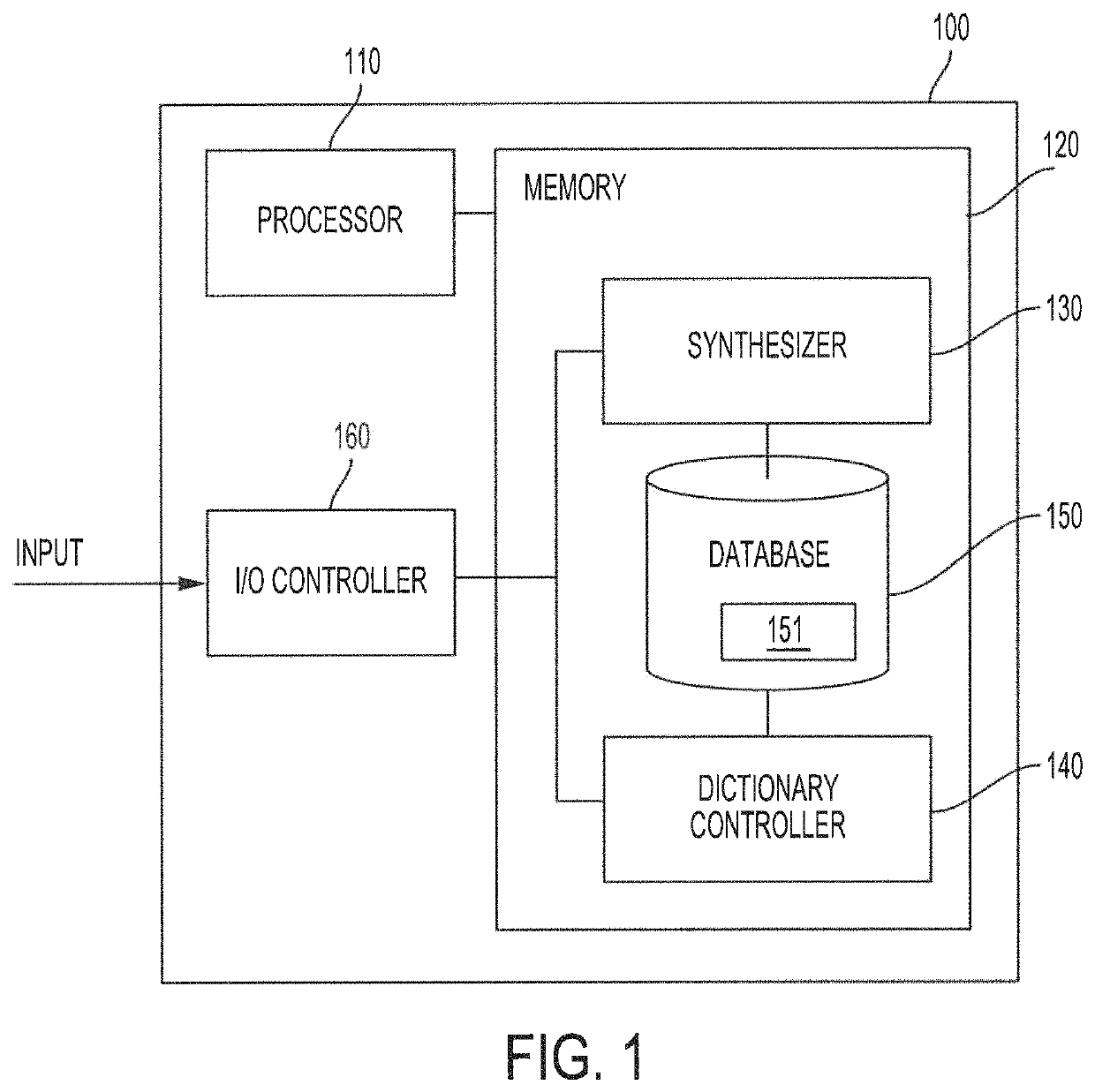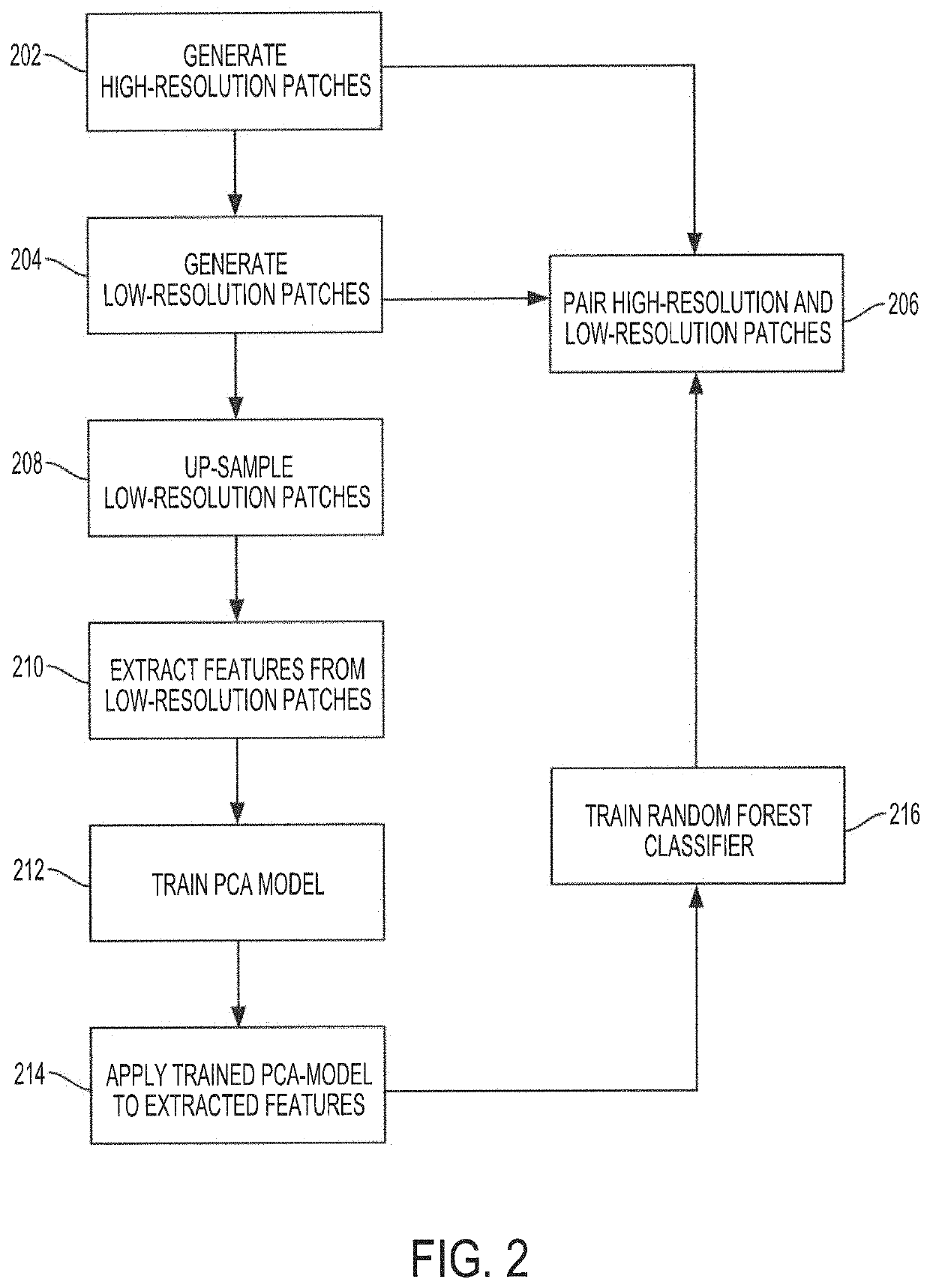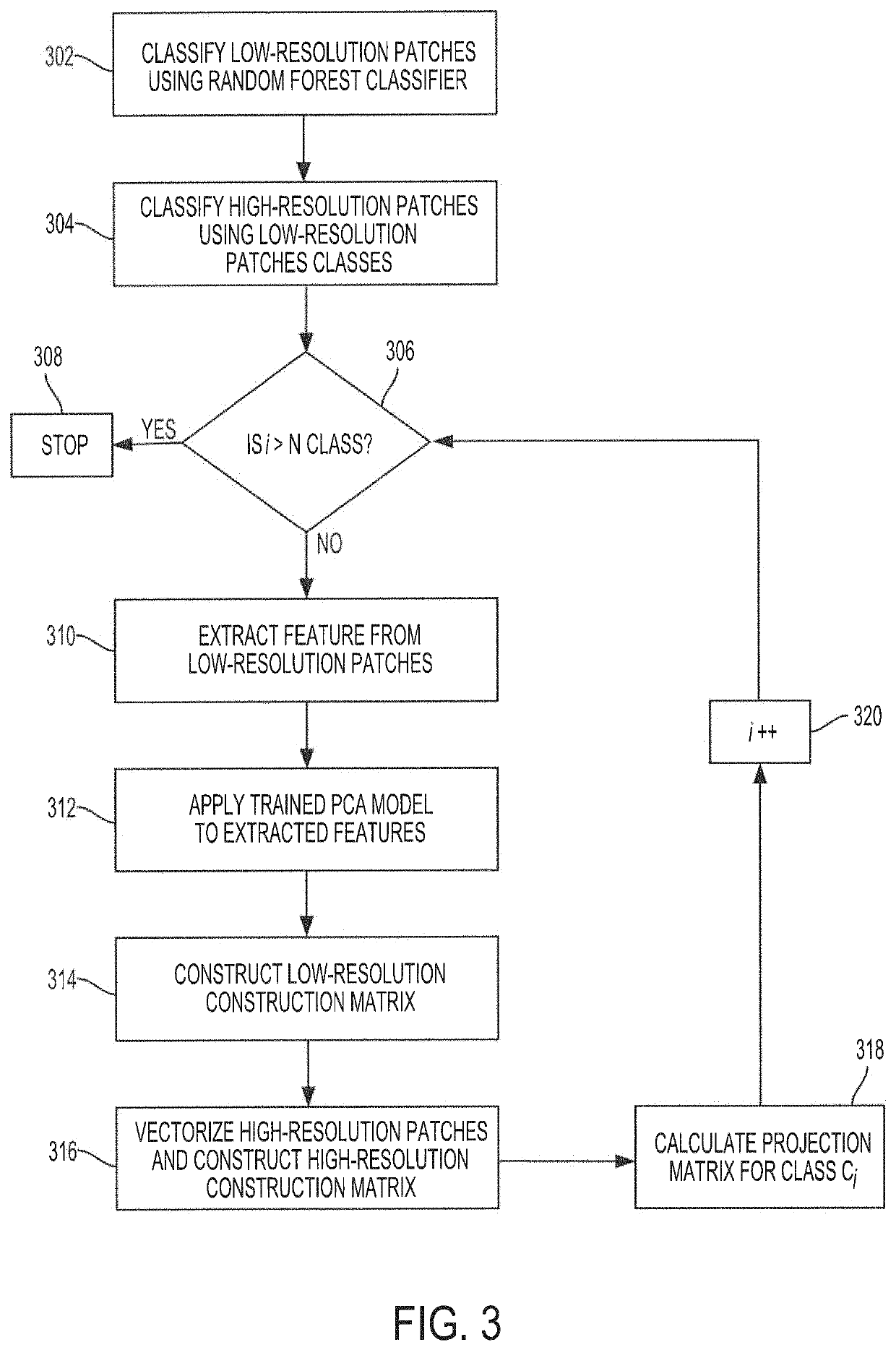Systems and methods for super-resolution synthesis based on weighted results from a random forest classifier
a random forest and weighted results technology, applied in the field of image synthesis, can solve the problems of insufficient detail for precise applications, low-resolution images captured, insufficient low-resolution images for facial recognition, etc., to achieve the effect of improving the detection rate of faces, reducing duplicate counting of people, and being precise and efficien
- Summary
- Abstract
- Description
- Claims
- Application Information
AI Technical Summary
Benefits of technology
Problems solved by technology
Method used
Image
Examples
Embodiment Construction
Super-Resolution Synthesis
[0024]FIG. 1 shows a block diagram of a system configured to provide super-resolution synthesis based on weighted results from a random forest classifier according to embodiments of the invention. System 100 of the illustrated embodiment includes processor 110, memory 120, synthesizer 130, dictionary controller 140, database 150, and input / output (I / O) controller 160. The various components of system 100 may cooperatively operate to provide functionality in accordance with the discussion herein. For example, low-resolution images (e.g., still images, moving images, video stream, image stream, etc.) may be provided as an input to system 100. The various components of system 100 may cooperatively operate to synthesize a high-resolution image corresponding to a low-resolution image from the input by applying trained random forest classifiers to low-resolution patches created from the low-resolution input image to calculate high-resolution patches, based on hig...
PUM
 Login to View More
Login to View More Abstract
Description
Claims
Application Information
 Login to View More
Login to View More - R&D
- Intellectual Property
- Life Sciences
- Materials
- Tech Scout
- Unparalleled Data Quality
- Higher Quality Content
- 60% Fewer Hallucinations
Browse by: Latest US Patents, China's latest patents, Technical Efficacy Thesaurus, Application Domain, Technology Topic, Popular Technical Reports.
© 2025 PatSnap. All rights reserved.Legal|Privacy policy|Modern Slavery Act Transparency Statement|Sitemap|About US| Contact US: help@patsnap.com



